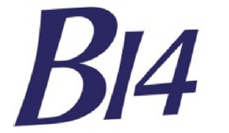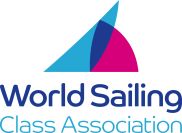A quick overview of what to look for in a used B14.
Boat Numbers:
100s: Started life as the Exocet boats, built by Starboard in Australia and imported to the UK. Started life without retractable pole, but most have now been converted. They also had a track rig tensioner on the foredeck. Several boats have undergone the change to a bow ring. Details on the conversion can be found on the website. Hulls all colours.
300s: Some of these boats have been imported from Australia and have a mixture of builders. The Hong Kong built boats are slightly different to the standard Aus boat and are stiffer. Hulls all colours, most painted.
600s: Built by Paul Young at Rondar. The majority of these were built between 1995 and 1998 in the build up to the B14 Worlds in Weymouth in 1998. Some boats (Nos. 644 – 658) were built in epoxy. The rest were built using polyester. Hulls all colours. From approx. 672 onwards the Rondar hulls were marketed and sold as a package by RS and this continued up and including number 754 (all boats sold through RS had polyester hulls).
700-754: Built by Paul Young at Rondar. Post 1998 Worlds boats. Hulls all colours.
755–787: Built by Ovington Boats 2001 - 2010. The most significant change was to the trench in the foredeck which stiffened the boats. Boats all built in epoxy. Hulls all white.
788 Onwards: Built by Seavolution/Synthesize September 2011 till 2015 hulls 788 - 791, and 795. Post 2015 Seavolution/Solent Boatworks has built B14 hulls 796 - 799 with one new B14 available to register. Solent Boatworks came out of Synthesize in 2015. The hull construction is as per the Ovington boat with the kick bars modified and daggerboard case re-aligned. Hulls in light grey.
Things to Look For Prior to Viewing:
Sails: Sails went through several upgrades. 1998 all had a small sail plan and often the older boats have these as training sails. 2001 Ullman Sails (Ian Simkins) started to push the roach and we saw the first of the more modern sail plans. Easy to identify as Ullman on the sails and smoked grey in colour. Norths and Hydes were not far behind with white and orange main/jib respectively. 2005 saw the next jump to the LGM05/LJG03 North main/jib in grey and AXT Kevlar cloths. Dynamic Sails (Dave Dobrijevic) arrived on the scene in 2008 and there are now 3 options again (North, Hyde, Dynamic). 2007 Dynamic pushed the roach to the max and North responded with the LGM06/08 mains. Late 2009 Ullman re-entered the market with Dacron jibs, and big head mains. P&B re-entered the market with ODL-06/04 jibs and big head mains, primarily pushed by P&B South. So currently, Dynamic, North, P&B and Ullman produce the pace sails for the TT boats. Kites all shapes still current from the main sailmakers but the benchmark is the North SS04.
Masts: Originally alloy, the class went to carbon masts in 2005. Alloy tubes can still be purchased from AllSpars in Plymouth. Things to look for: is the mast prebent when lying flat, compression cracks around the heel and lower spreaders. If top track is loose, not a problem, using Plexus or similar adhesive, glue it on. Carbon mast, look for cracks around the join by the lower spreaders, check the rivets and look for stress cracks at the top T terminals. All easy to repair but can cost.
Boom: Boom was upgraded in 2001 due to the number of breakages with the big head mains. If you have a carbon mast with the boat, make sure that the boom moulding is the correct one for the gooseneck (narrower dia). It should be a tight fit. Look along the boom to check it is not bent. If it is you can buy the tube only and retrofit.
Foils: Seavoluiton bought DEM on board in late 2011 and the daggerboards are now moulded in an aluminium mould getting more exact shape than the previous mould. Way to tell which blade it is, is if the leading edge has a cutout at the front top it is pre DEM. Boards slightly thinner than the Ovington cross profile due to the strength of the mould rather than a new shape.
Pole: Rondar hulls - check the inner pole for corrosion and that the blocks work. Pole, only need to check it does not have any splits, cracks at the point where it exits the hull at the bow when fully extended.
Wings: The fleet has both alloy and Carbon racks. Racks were upgraded in 2005 and now have stiffer struts and plumbing joints on the inner end. Some also but rarely have outer plumbing joints. If sailing the boat hard on a regular basis, you should change the struts every other year. Not expensive to do and an easy job. When buying ask when they were last changed especially the forward ones. Carbon wings, not much here other than to check the inner ends to make sure they have not spread and where the wing passes over the outer gunwale that the tube is at least 8 mm above the hull and check carefully here for any compression cracks. Easy to spot, but now a rare occurrence as the class now knows what the issues have been.
Rudder: Class started with the lifting rudder with wishbone style stock. There are still a number of boats with these. Some are fine but some are tired. Look for cracks where the bolts are and cracks in the blade where the pin passes through.
Daggerboard: Nothing here really. You need to check for horizontal cracks where the blade passes through the bottom of the hull. Approx. 20 – 40 cm from the top. The are still some Milanes wooden laminated foils around. Check for delamination.
Hull: When first viewing the boat, check that the transom bar is not badly corroded, bow ring welds are not cracked, shroud mounts on the deck are not pulling through, mast step and wing horn mounts are not pulling out. All easy to resolve but again will cost. Hull joint along the gunwale - look for fine longitudinal discolouration which may indicate cracks, case of grinding out, acetoning and refilling) and damage to the case from grounding (easy to fix and the usual point for leaks). Check the bottom for dings as per all foam sandwich hulls. If buying an Ovington hull and it has carbon wings, check that they have had the upgrade on the horn mounts as the original mounts were screwed into plywood. Upgrade will have an epoxy stainless steel or bronze plate instead.
Rig Tension: Once satisfied you have a good boat, rig it and use a LOOS gauge, Put 35 - 37 on the lowers and 25 on the bow. Leave the tension on for say approx. 20 minutes and see if it loses tension. If it loses only slightly you should be ok. If it loses a lot, check that the mast has not bedded into the step etc and then reset and try again. Also check the gunwales in the region of the shrouds again for cracks etc.
Most B14s ever built are still sailing and only a handful have passed the point of no return. So most things are fixable, but require a little time and understanding. The Website Forum has most answers and the sailors are always willing to offer advice. I would suggest that you go to a TT Event or club that sails B14s and talk to the sailors. Once you have purchased a boat, the best way to find out how to sail it is to return to the club or rock up to a TT. It will be the best bang for buck you have ever spent if looking to put a smile on your face.

